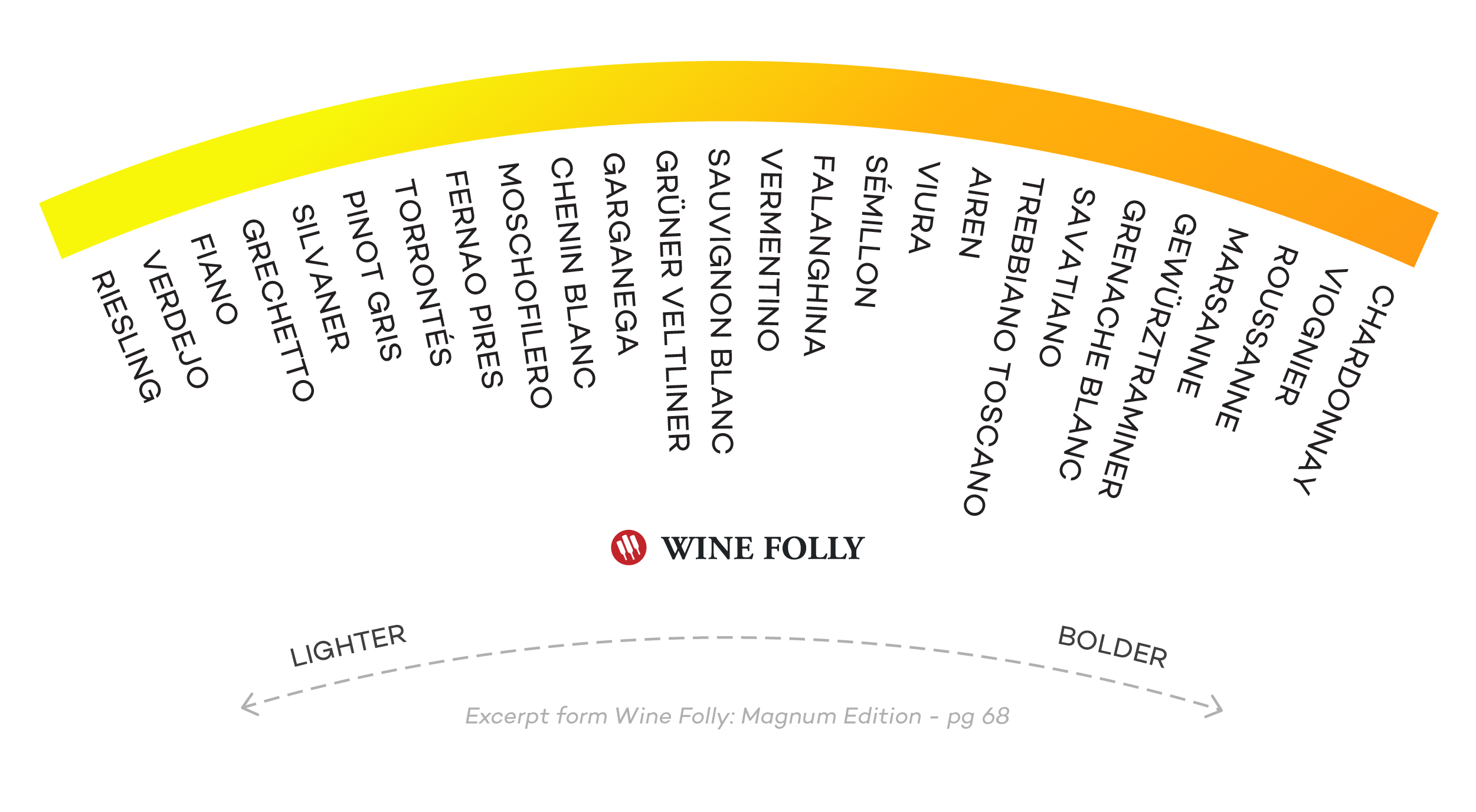Explore some expert tips on choosing dry white wines for their texture and complexity.
In this video, Madeline Puckette dives into what makes dry white wines intriguing. Turns out, it’s more than just grape variety that makes up quality.
On Choosing Dry White Wines
The very first thing we all look at when buying white wines is the grape variety. This is a great first step because the variety sets the basic structure and flavors.

Beyond boldness level, white wine flavors range considerably, so it helps to categorize them further:
- Herbaceous: Wines with dominant “green” or herbal notes including varieties like Grüner Veltliner, Sauvignon Blanc, Vermentino, etc.
- Sweet, Aromatic: Wines with higher levels of monoterpenes (the same smells found in roses) that have sweet aromatics such as Gewürztraminer, Muscat Blanc, Moschofilero, etc.
- Neutral: Wines with neutral “apple-citrus” like flavors that don’t cleanly fit in any other category like Chardonnay, Pinot Gris, Sémillon, etc.
Once we explore the list of white wines based on their varietal flavor profile, we see variation within varietal wines based on how they’re made. This is where things start to get complicated.
Aging in Oak (Neutral or Otherwise)
Oak aging affects wine in two major ways: it increases exposure to oxygen, and new oak adds flavors. Chardonnay is the classic “oaky white,” but many white wines that age in oak end up with similar vanilla flavors.
Fermenting in Oak
Fermenting in oak affects white wine more subtly. More often than not, the winery ferments in neutral (as in used) barrels. These barrels no longer impart oak flavors, but they do allow oxygen to pass through. Oxygen can increase color in white wines and affects the presence of aromatic compounds and phenolics.
For example, the floral aromatics in Gewürztraminer would likely be greatly reduced if fermented in oak.
Malolactic Fermentation
Malolactic Fermentation or MLF often happens while a white wine ages in oak barrels but it isn’t exactly the same thing. It’s what gives white wines a creamy, oily, buttery mouthfeel. If you’ve ever had a creamy Viognier from Paso Robles, you know exactly what I’m talking about!
MLF isn’t a fermentation but an acid conversion done by this cute little microbe called Oenococcus oeni.
Aging on the “Lees”
Lees are these the little yeast bits that sink to the bottom of the tank. Imagine brewer’s yeast; this is the wine version. Well, the winemaker sticks a golf club-looking tool into a barrel of wine and stirs up the lees. Lees add creaminess and some oiliness to the texture of wine, and they can also smell “beer-like.”
If you’ve ever had a “Sur Lie” Muscadet Sèvre-et-Maine that smells like lager, then you know lees!

Skin Contact
Some white wines (such as Vermentino – tasted in the video above!) get a day or two (or more) of maceration on their skins before getting squeezed. White grape skins have all kinds of great polyphenols (tannins, astringency, etc.), and they taste green, herbaceous, and bitter.
Despite past negative associations with bitterness in food (little kids not eating their greens), bitterness in white grape skins adds all kinds of texture and interest to white wines. That being said, skin contact is an acquired taste (and probably not beginner-friendly).
Using “Native” Yeasts
Wild yeasts have turned out to be a great tool for making white wines taste interesting. There are several theories why this might be:
- The presence of other yeasts and microbes fighting for dominance during the start first 4 degrees (up to ~4% ABV) creates a slew of aromatic compounds.
- Native yeasts are usually slower to ferment wines. The length of the fermentation definitely affects the taste.
- Native yeasts can alter the acidity level (often making wines taste “smoother”)
There’s More To White Wine Than Meets The Eye
On the surface, white wines seem more simple than red wines. And certainly, they’re more subtle. However, underneath that blond hue, there’s a lot going on.
